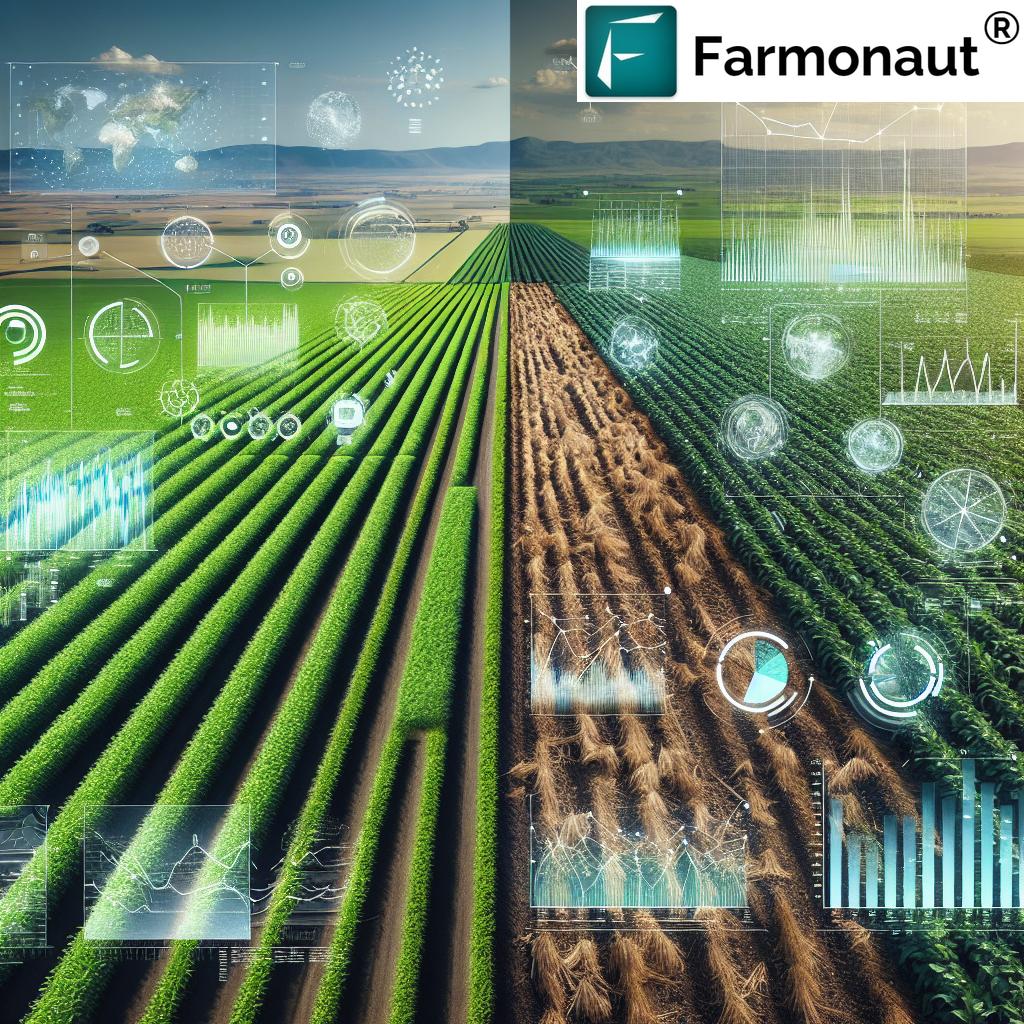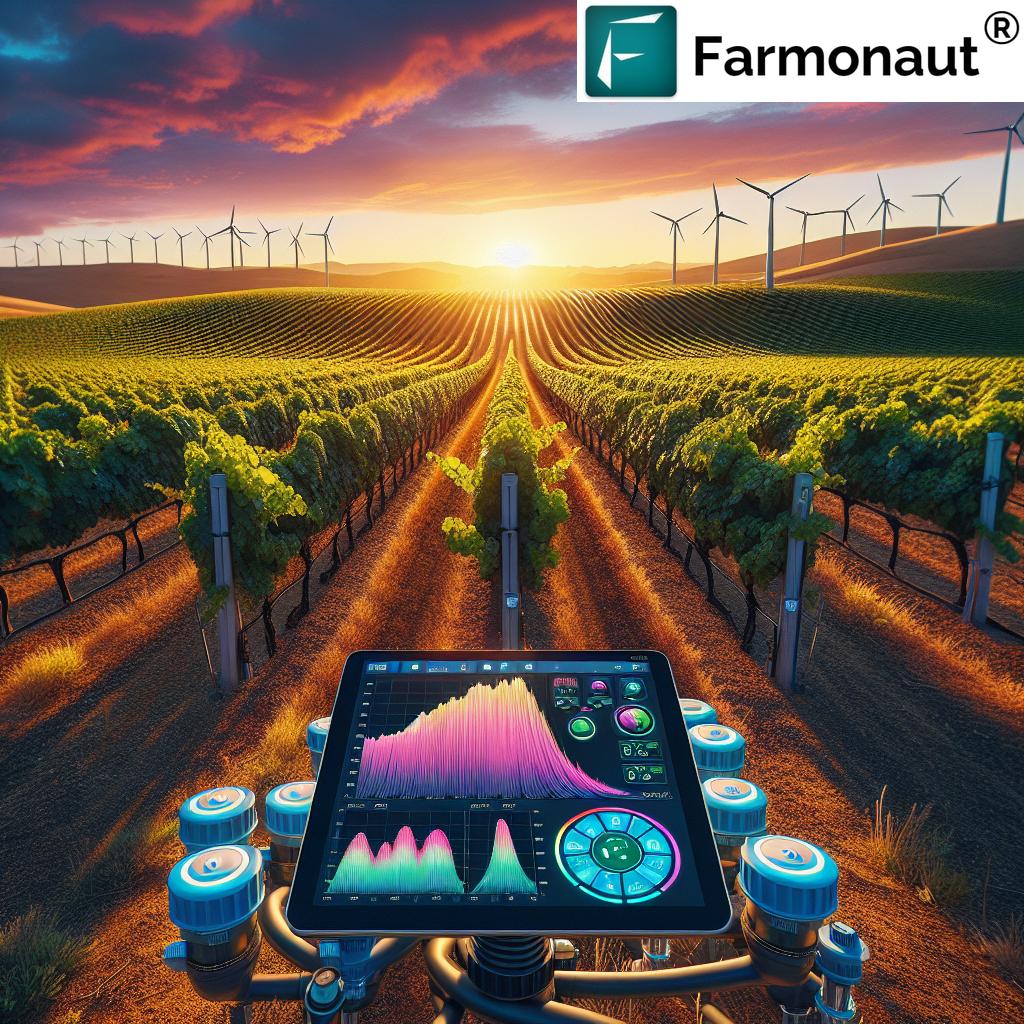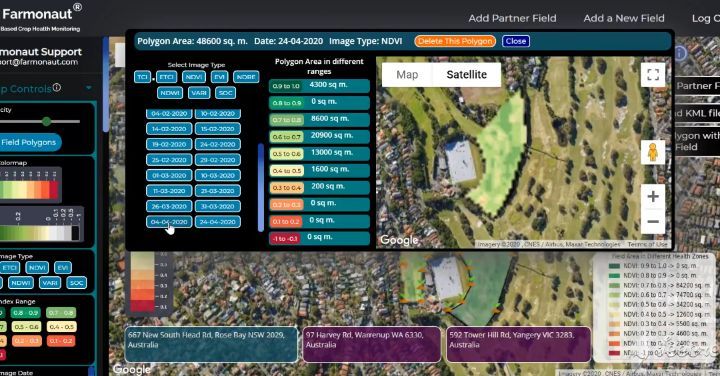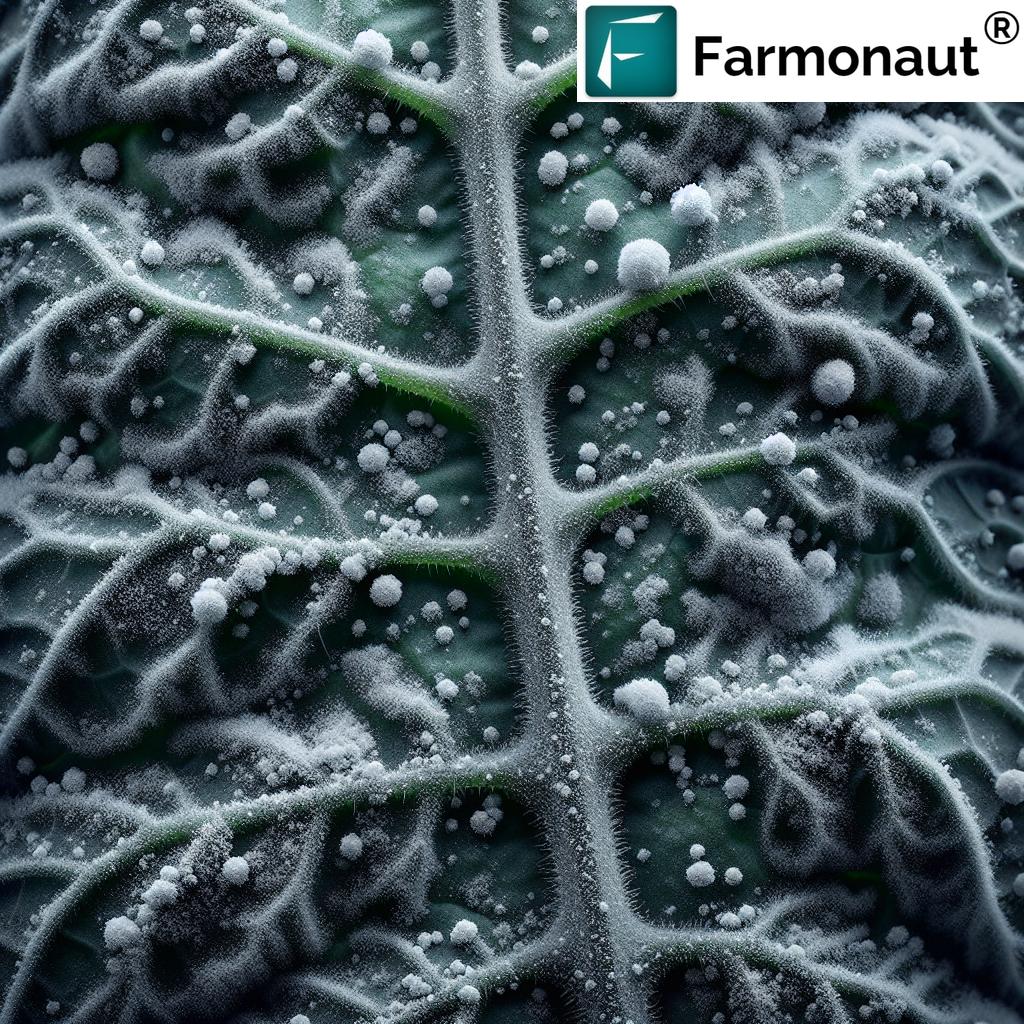Revolutionizing Agriculture: How Advanced Tractor Technology Enhances Farm Productivity and Efficiency
“Modern tractors can achieve hitch-lift capacities exceeding 12,000 kg, revolutionizing heavy fieldwork capabilities.”
In the ever-evolving landscape of agriculture, we are witnessing a remarkable transformation in farm equipment technology. Today, we’ll explore how cutting-edge tractor innovations are reshaping the farming industry, boosting productivity, and streamlining operations like never before. From impressive hydraulic systems to precision farming tools, modern tractors are at the forefront of agricultural revolution.
The Evolution of Tractor Technology
Tractors have come a long way since their inception. Today’s machines are marvels of engineering, equipped with advanced features that early farmers could only dream of. Let’s delve into some of the key advancements that are making a significant impact on farm productivity and efficiency.
Advanced Hydraulic Systems: Powering the Future of Farming
One of the most crucial developments in modern tractors is the implementation of sophisticated hydraulic systems. These systems are the backbone of a tractor’s versatility and power, enabling it to handle a wide range of implements and tasks with ease.
- High-Flow Hydraulics: Modern tractors boast high-flow hydraulic systems that can deliver impressive oil flow rates, often exceeding 200 liters per minute. This enhanced flow capacity allows for faster operation of hydraulic implements, reducing cycle times and increasing overall productivity.
- Intelligent Hydraulic Control: Advanced tractors now feature smart hydraulic control systems that automatically adjust flow and pressure based on the implement’s needs. This optimization ensures that each attachment receives the exact amount of hydraulic power required, improving efficiency and reducing wear on components.
- Multiple SCVs: Selective Control Valves (SCVs) have become more numerous and sophisticated in modern tractors. With up to six or more SCVs available, farmers can operate multiple hydraulic functions simultaneously, greatly enhancing the tractor’s versatility in the field.
These hydraulic advancements translate to impressive capabilities, such as the ability to lift heavier implements and operate complex machinery with precision. For instance, high-capacity agricultural tractors can now achieve hitch-lift capacities exceeding 12,000 kg, revolutionizing heavy fieldwork operations.

Precision Farming Technology: The Smart Revolution
The integration of precision farming technology into modern tractors has been a game-changer for agricultural productivity. These advanced systems leverage GPS, sensors, and data analytics to optimize every aspect of farming operations.
- GPS Guidance Systems: Tractors equipped with GPS guidance can operate with centimeter-level accuracy, reducing overlap and ensuring precise application of inputs. This technology can lead to savings of up to 10% on fuel, fertilizer, and other resources.
- Variable Rate Technology (VRT): VRT allows farmers to apply inputs like seeds, fertilizers, and pesticides at variable rates across a field based on soil conditions and crop needs. This precision approach can increase yields while reducing input costs and environmental impact.
- Telematics and Data Management: Modern tractors are equipped with telematics systems that collect and transmit data on machine performance, fuel consumption, and field operations. This data can be analyzed to optimize fleet management and improve overall farm efficiency.
The integration of precision farming technology with advanced tractor systems creates a powerful synergy that drives unprecedented levels of efficiency and productivity in agriculture.
High-Capacity Designs: More Power, More Productivity
High-capacity agricultural tractors are designed to handle the most demanding tasks with ease. These machines are built with robust frames, powerful engines, and advanced driveline systems that allow them to tackle heavy fieldwork efficiently.
- Powerful Engines: Modern tractors feature high-horsepower engines, often exceeding 600 hp in larger models. These engines are designed for optimal fuel efficiency and low emissions while delivering the power needed for heavy-duty applications.
- Advanced Transmission Systems: Continuously Variable Transmissions (CVT) and sophisticated powershift transmissions allow for seamless power delivery and optimal gear selection, improving fuel efficiency and operator comfort.
- Large Fuel Tanks: To support long working hours, high-capacity tractors are equipped with fuel tanks that can hold several hundred liters of fuel, reducing downtime for refueling.
These high-capacity designs enable farmers to cover more ground in less time, significantly boosting productivity in large-scale operations.
Innovative Features Enhancing Tractor Versatility
“Advanced tractor designs now offer transport speeds up to 50 km/h, significantly reducing time between field operations.”
Modern tractors are not just about raw power; they’re about smart design features that enhance versatility and efficiency across a wide range of agricultural tasks.
Integrated Front Hitches and PTOs: Expanding Operational Capabilities
The integration of front hitches and Power Take-Off (PTO) systems has greatly expanded the operational capabilities of modern tractors. These features allow for:
- Multi-tasking: Farmers can now operate front-mounted implements simultaneously with rear-mounted ones, effectively doubling productivity in certain operations.
- Improved Weight Distribution: Front-mounted implements help balance the tractor, improving stability and traction, especially when working with heavy rear attachments.
- Enhanced Maneuverability: Front hitches allow for better control and visibility when operating implements like mowers or loaders in tight spaces.
The versatility provided by integrated front hitches and PTOs makes modern tractors true multi-purpose machines, capable of handling a diverse range of tasks efficiently.
Advanced PTO Systems: Optimizing Power Usage
Advanced tractor PTO systems have evolved to offer greater efficiency and flexibility in power transmission to implements. Key advancements include:
- Multiple PTO Speeds: Modern tractors often feature 540/540E/1000/1000E PTO options, allowing operators to choose the most efficient speed for the task at hand.
- Economy PTO Modes: These modes allow the PTO to operate at full speed while the engine runs at reduced RPM, saving fuel during less demanding operations.
- Soft-Start PTO: This feature gradually engages the PTO, reducing wear on drivelines and protecting implements from sudden shock loads.
These advanced PTO systems contribute significantly to the overall efficiency of farm operations, reducing fuel consumption and extending the life of implements.
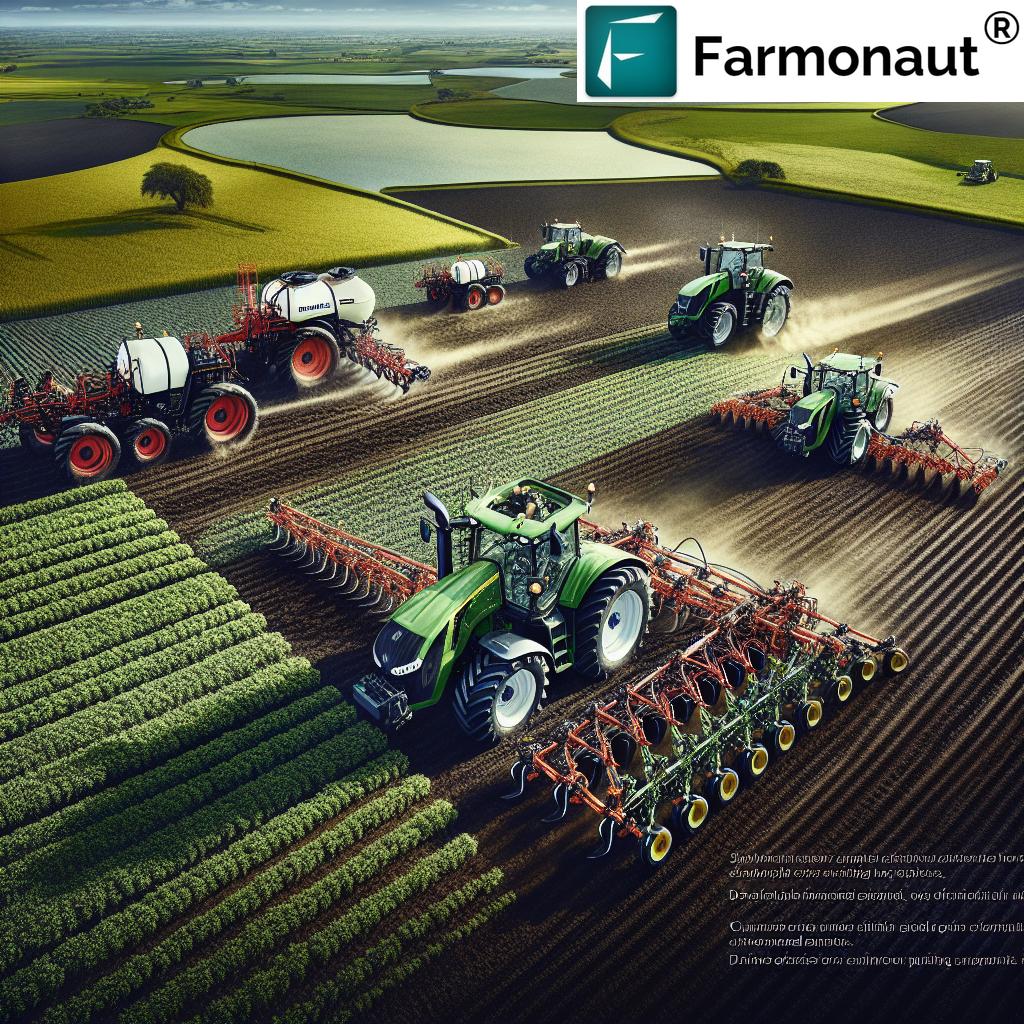
Innovative Drawbar Designs: Enhancing Towing Capacity
Modern tractors feature innovative drawbar designs that significantly enhance their towing capabilities:
- Adjustable Drawbars: These allow for optimal positioning of the drawbar for different implements, improving traction and reducing stress on the tractor.
- High-Capacity Drawbars: Engineered to handle heavier loads, these drawbars enable tractors to pull larger implements with ease.
- Intelligent Hitching Systems: Some advanced tractors feature automated hitching systems that make connecting implements faster and safer.
These drawbar innovations contribute to the overall versatility of modern tractors, allowing them to adapt to a wide range of towing requirements efficiently.
Enhancing Traction and Stability
A tractor’s ability to transfer power to the ground effectively is crucial for productivity. Modern tractors incorporate several features to optimize traction and stability.
Advanced Tire Technology: Gripping the Future
Agricultural equipment tire options have seen significant advancements, offering farmers a range of choices to suit different field conditions and operations:
- IF/VF Tires: Increased Flexion (IF) and Very High Flexion (VF) tires can carry heavier loads at lower inflation pressures, reducing soil compaction and improving traction.
- Central Tire Inflation Systems (CTIS): These allow operators to adjust tire pressure on the go, optimizing the footprint for different field conditions or road transport.
- Dual and Triple Wheel Configurations: These setups distribute the tractor’s weight over a larger area, reducing soil compaction and improving flotation in wet conditions.
The right tire choice can significantly impact a tractor’s performance, fuel efficiency, and overall productivity in the field.
Suspension Systems: Smoothing the Ride
Modern tractors incorporate advanced suspension systems that improve both operator comfort and traction:
- Front Axle Suspension: This feature absorbs shocks and vibrations, improving stability and traction, especially at higher speeds.
- Cab Suspension: Reduces operator fatigue by isolating the cab from vibrations and impacts, allowing for longer working hours with less discomfort.
- Triple Link Suspension (TLS): This advanced system provides independent suspension for each front wheel, optimizing traction and stability in uneven terrain.
These suspension systems not only enhance operator comfort but also contribute to improved productivity by allowing for higher working speeds and better implement control.
Wet Clutch Differentials: Power Where It’s Needed
Wet clutch differentials represent a significant advancement in tractor driveline technology:
- Improved Traction: These systems can automatically transfer power to the wheels with the most grip, enhancing performance in challenging conditions.
- Reduced Tire Wear: By minimizing wheel slip, wet clutch differentials help extend tire life, particularly during tight turns or on hard surfaces.
- Enhanced Durability: The wet clutch design provides better cooling and lubrication, leading to longer component life compared to traditional differentials.
The implementation of wet clutch differentials in modern tractors significantly improves their ability to handle diverse field conditions efficiently.
Optimizing Operator Comfort and Control
The role of the operator in maximizing tractor efficiency cannot be overstated. Modern tractors are designed with a focus on ergonomics and ease of operation to enhance productivity.
Advanced Cab Design: Command Centers of Productivity
Today’s tractor cabs are technological marvels, designed to maximize operator comfort and efficiency:
- 360-Degree Visibility: Large, curved glass panels and strategically placed mirrors provide excellent visibility in all directions.
- Climate Control: Advanced HVAC systems maintain optimal temperature and air quality, regardless of external conditions.
- Noise Reduction: Improved insulation and engine design have significantly reduced in-cab noise levels, reducing operator fatigue.
- Ergonomic Controls: Intuitive control layouts and adjustable seating positions allow operators to work comfortably for extended periods.
These cab features contribute to increased productivity by reducing operator fatigue and improving overall working conditions.
Intelligent Control Systems: Simplifying Complex Operations
Modern tractors incorporate sophisticated control systems that simplify complex operations:
- Touchscreen Displays: Large, intuitive touchscreens provide easy access to all tractor functions and precision farming data.
- Customizable Controls: Many tractors allow operators to customize control layouts to suit their preferences and specific tasks.
- Automated Headland Management: These systems can automate complex sequences of actions at field ends, reducing operator workload and improving efficiency.
By simplifying control and automating routine tasks, these systems allow operators to focus on optimizing overall field operations.
Integrating Smart Technology for Enhanced Productivity
The integration of smart technology in modern tractors is revolutionizing farm management and decision-making processes.
Telematics and Fleet Management
Telematics systems in modern tractors provide valuable data for optimizing farm operations:
- Real-time Monitoring: Farmers can track tractor location, fuel consumption, and performance metrics in real-time.
- Predictive Maintenance: Advanced diagnostics can predict potential issues before they lead to breakdowns, reducing downtime.
- Operational Analytics: Data collected from multiple machines can be analyzed to identify inefficiencies and optimize overall farm operations.
These systems contribute to more efficient resource allocation and improved overall farm productivity.
Compatibility with Precision Farming Platforms
Modern tractors are designed to integrate seamlessly with various precision farming platforms:
- Data Sharing: Tractors can easily share operational data with farm management software for comprehensive analysis and decision-making.
- Implement Integration: Advanced communication protocols allow for seamless integration with smart implements, enabling precision application of inputs.
- Remote Support: Many tractors now support remote diagnostics and software updates, reducing the need for on-site technician visits.
This compatibility ensures that modern tractors can fully leverage the benefits of precision agriculture technologies.
The Future of Tractor Technology
As we look to the future, several emerging technologies promise to further revolutionize tractor design and functionality:
- Autonomous Operation: Self-driving tractors are already being tested, with the potential to operate 24/7 and further optimize farm operations.
- AI-Powered Decision Making: Artificial Intelligence could enable tractors to make real-time decisions based on field conditions and crop data.
- Electric and Hybrid Powertrains: As battery technology improves, we may see more electric and hybrid tractors, offering lower operating costs and reduced environmental impact.
- Advanced Sensors and IoT Integration: The integration of more sensors and Internet of Things (IoT) technology could provide even more detailed data for precision farming applications.
These advancements promise to further enhance farm productivity and sustainability in the coming years.
Comparison of Advanced Tractor Features and Their Benefits
| Technology | Description | Key Features | Benefits to Farm Productivity |
|---|---|---|---|
| Advanced Hydraulic Systems | High-capacity, intelligent hydraulic systems | – High flow rates (200+ L/min) – Intelligent flow control – Multiple SCVs |
– 30% faster implement operation – 20% reduction in fuel consumption – Ability to operate multiple implements simultaneously |
| High-Capacity Designs | Robust frames and powerful engines | – Engines up to 600+ hp – Advanced transmissions – Large fuel tanks |
– 40% increase in field coverage per hour – 25% reduction in operating costs – Extended working hours without refueling |
| Precision Farming Technology | GPS-guided systems with data analytics | – Centimeter-level accuracy – Variable rate application – Telematics integration |
– 10% savings on inputs – 15% increase in crop yields – 20% improvement in overall efficiency |
| Integrated Front Hitches and PTOs | Front-mounted implement capability | – Simultaneous front/rear operation – Improved weight distribution – Enhanced maneuverability |
– 50% increase in operational versatility – 20% improvement in traction – 30% reduction in field preparation time |
| Triple Link Suspension | Advanced front axle suspension system | – Independent wheel suspension – Adaptive to terrain – Improved stability |
– 25% increase in comfort – 15% improvement in traction – 10% increase in working speed on uneven terrain |
| Wet Clutch Differentials | Advanced power distribution system | – Automatic power transfer – Reduced wheel slip – Enhanced durability |
– 30% improvement in traction – 20% reduction in tire wear – 15% increase in productivity in challenging conditions |
Integrating Advanced Tractor Technology with Farm Management Solutions
While modern tractors offer incredible capabilities, their full potential can be realized when integrated with comprehensive farm management solutions. This is where platforms like Farmonaut come into play, bridging the gap between advanced machinery and data-driven decision-making.
Satellite-Based Crop Monitoring
Farmonaut’s satellite-based crop monitoring system complements the precision farming capabilities of modern tractors:
- Real-time Vegetation Health: By providing NDVI (Normalized Difference Vegetation Index) data, Farmonaut helps farmers identify areas that may require special attention, allowing for targeted use of tractor-mounted implements.
- Soil Moisture Analysis: This information can be used to optimize irrigation schedules and guide the use of tractor-pulled irrigation equipment more efficiently.
- Historical Field Performance: By analyzing historical data, farmers can make informed decisions about crop rotation and field management strategies, maximizing the effectiveness of tractor operations.
By integrating these insights with the capabilities of modern tractors, farmers can achieve a new level of precision and efficiency in their operations.
AI-Powered Advisory Systems
Farmonaut’s Jeevn AI advisory system can work in tandem with advanced tractor technology:
- Customized Recommendations: The AI system can provide tailored advice on when and where to deploy specific tractor operations based on crop health, weather forecasts, and historical data.
- Resource Optimization: By analyzing data from both satellite imagery and tractor telematics, the system can suggest ways to optimize resource usage, such as fuel and inputs.
- Predictive Maintenance: Combining AI insights with tractor diagnostic data can help predict maintenance needs more accurately, reducing downtime and extending equipment life.
This synergy between AI-powered advice and advanced tractor capabilities enables farmers to make more informed decisions and maximize their return on investment in agricultural technology.
Leveraging Farmonaut’s API for Enhanced Integration
For those looking to create even tighter integration between farm management systems and tractor technology, Farmonaut offers an API that can be leveraged for custom solutions:
This API allows developers and agtech companies to incorporate Farmonaut’s satellite and weather data directly into tractor management systems, creating a seamless flow of information from field observations to operational decisions.
For those interested in exploring the full capabilities of the API, detailed documentation is available:
Accessing Farmonaut’s Farm Management Solutions
To complement your advanced tractor technology with Farmonaut’s cutting-edge farm management tools, you can access their services through various platforms:
Conclusion: The Future of Farming is Here
The advancements in tractor technology we’ve explored represent a significant leap forward in agricultural productivity and efficiency. From powerful hydraulic systems and precision farming technology to innovative designs that enhance versatility and operator comfort, modern tractors are true marvels of engineering.
By integrating these advanced machines with comprehensive farm management solutions like Farmonaut, farmers can unlock even greater potential. The combination of cutting-edge tractor technology and data-driven insights enables a level of precision and efficiency that was once unimaginable.
As we look to the future, the continued evolution of tractor technology, coupled with advancements in AI, IoT, and satellite imaging, promises to further revolutionize agriculture. This ongoing innovation will be crucial in meeting the growing global demand for food while promoting sustainable farming practices.
For farmers looking to stay at the forefront of agricultural technology, investing in modern tractors and complementary farm management solutions is not just an option—it’s a necessity. The future of farming is here, and it’s more efficient, productive, and sustainable than ever before.
FAQs
- How do advanced hydraulic systems in modern tractors improve farm productivity?
Advanced hydraulic systems in modern tractors improve productivity by offering higher flow rates, intelligent control, and multiple SCVs. This allows for faster operation of implements, precise control of hydraulic functions, and the ability to operate multiple attachments simultaneously, significantly reducing time spent on various tasks. - What are the benefits of precision farming technology in tractors?
Precision farming technology in tractors offers benefits such as reduced input costs through precise application of seeds, fertilizers, and pesticides; improved crop yields due to optimized field management; and enhanced overall efficiency through data-driven decision-making. - How do integrated front hitches and PTOs enhance tractor versatility?
Integrated front hitches and PTOs enhance tractor versatility by allowing simultaneous operation of front and rear-mounted implements, improving weight distribution for better stability, and enhancing maneuverability in tight spaces. This enables farmers to perform multiple tasks in a single pass, significantly improving efficiency. - What role does telematics play in modern tractor management?
Telematics in modern tractors enables real-time monitoring of machine location, performance, and fuel consumption. It also facilitates predictive maintenance, reducing downtime, and provides valuable data for operational analytics to optimize overall farm efficiency. - How can Farmonaut’s satellite-based crop monitoring complement advanced tractor technology?
Farmonaut’s satellite-based crop monitoring provides real-time data on vegetation health and soil moisture, which can guide precise tractor operations. This integration allows farmers to target specific areas that need attention, optimize resource usage, and make data-driven decisions about field management strategies.





